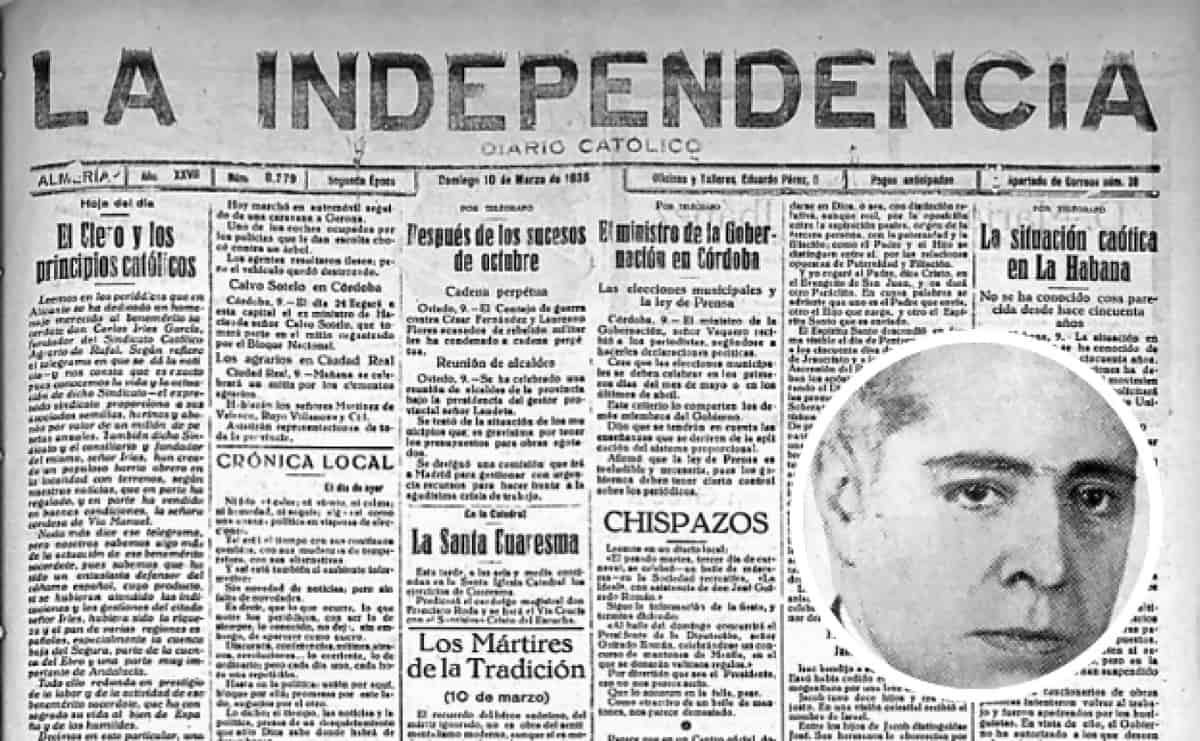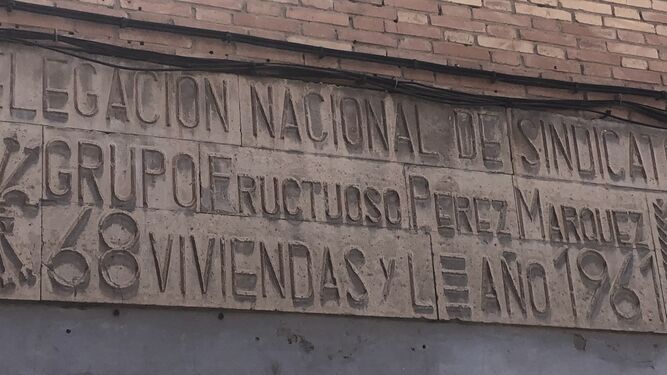On August 15, 1936 militiamen of the National Front they shot on the beach of La Garrofa, in Almería, the director of the Catholic newspaper The independenceFructuoso Perez Márquez, and several collaborators. Along with him, his collaborators and editors fell under the bullets: Fructuoso’s brother-in-law, Antonio Barceló Toro; the priest and religious editor, Rafael Román Donaire; Alejandro Salazar Salvador, Jesús Salazar Ruiz and the collaborators Rafael Calatrava Ros, Jaime Calatrava Romero, Francisco Florido, Pablo Sáez de Bares, Ginés Céspedes Jerez and Dr. Juan Banqueri Salazar. That morning they killed 26 people on that beach and threw their bodies into the sea.
The socialist union UGT confiscated the newspaper, its machinery and facilities and used it to publish its magazine, “Ahead!”, whose number one came out on August 4. La Independencia was coming to an end, after 28 years of existence and more than 8,650 numbers.
Of those shot on the beach, Fructuoso Pérez now stands out because as of this Saturday he will be able to be venerated by the Church as a martyr and blessed. It is part of the cause of the 27 Dominican martyrs who will be beatified in a ceremony in Seville Cathedral on Saturday, June 18 (they include the Dominican friars of Almagro, protagonists of the film under a blanket of stars).
A daily rosary christian family
Fructuoso Pérez was a layman, married, father of a family with four children. As a child he had studied at the Almería seminary and had learned Philosophy and Humanities. Later He traveled to Chile for a few years with his uncle, who was a canon, and returned to Spain to devote himself to journalism. From editor he would become administrator of The independence and later its director, from 1922.
He married in 1911, at the age of 27, with María Barceló Toro, 24, who was also from Almería. A strong Dominican spirituality was lived in the house. At home, the rosary was prayed every day and the saints of the “Christian year” were read with some frequency..
Her son explained that in that home all the adults were Dominican tertiaries: “my father, my mother, my aunt, and the two girls. One of them, María Carretero, became a cloistered Dominican; I think in the convent of Zafra and, later, in one of Barcelona”. Another of the daughters became an adoring nun. The children studied at the school of the Daughters of Charity. The boys, after their first communion, went to the the Brothers of the Christian Schools.
His son wrote of him: “He was a fervent Catholic, a brave defender of the truth, without human respect, At the risk of everything, he was affable, charitable, he lived the faith. it was nice, simple, very exemplary, always at the service of the Church. he was a sainthe liked to talk to the poor, unbeatable, polite, very religious, kind, and of good character”.
He was also very good at playing the piano and in fact as a young man had been offered a musical position at the cathedral, but he turned it down and focused on journalism.
The Republic arrives: “we are where we were; in the first place, Catholics”
In the municipal elections of April 1931 the right obtained more votes than the left, but in the big cities the left won. King Alfonso XIII fled the country after a 29-year reign, hoping to avoid a civil war. The Second Republic was proclaimed.
The independencewho always defended the monarchy, with Fructuoso at the helm, immediately published his position regarding the new situation: “We are who we were. We are where we were. In the first place, Catholics, Apostolic, Roman. Our action, with the Monarchy or with the Republic, will be from now on what it has been until today; above all things, God and the Church, whose doctrines and mandates we blindly follow”declared the editorial.
Fructuoso had been the director since 1922. Among some pioneering measures, the newspaper admitted women as columnists, among them the poetess Carmen Gimenez Garcia (1883-1951), habitual in its pages. In 1931 he launched a modern linotype machine, a huge and revolutionary artifact that continued to function until the 1970s.
On August 10, 1932, some police officers -by order of the new republican governor Isidro Liarte Lausín- closed the newsroom and newspaper Until 15 September. Without income from sales or advertising, Pérez Márquez managed to pay the salary of the entire staff. Returning to the newspaper a month later, the editorial proclaimed: “Without being arrogant, we can say that there will be no human force capable of making us change course, counting on the help of God to whom we consecrate our work, our interests and our own life”. Four years later, indeed, he would give that life.
To Fruitful the republican authorities arrested him a few more times, without much reason. Once it was on October 29, 1932, when I was in the Café Colón, arrested with 8 other people (a clergyman, two doctors, a lawyer…), apparently because one had sugar cubes wrapped in a paper with scenes monarchical
In April 1936 he was arrested again and his house was searched, with no more accusation than the opinions published by the newspaper. Other media in the city protested and asked the governor for his freedom, who released him, but always under surveillance.

Captured and shot
On July 18, 1936, the Civil War began. Almería came under the control of the Popular Front. On the 28th of that same month, Pérez Márquez was arrested and imprisoned.. His family did not hear anything more about him from the authorities, although well into the war a letter addressed to the “Widow of Fructuoso Pérez Márquez” arrived at the house: it was the only official notification of his death. His son ran away to avoid being killed. The woman fell ill and died shortly after.
It’s known that Fructuoso was taken to the convent of the religious Adorers, converted into an improvised prison. On August 3, they took him to the prison ship “Segarra”, until dawn on the 15th. He was shot at dawn on La Garrofa beach with 26 other Almerian citizens. Their corpses were thrown into the sea, but after the war the remains were recovered and be buried in the municipal cemetery.
Awards at the end of the war
In August 1939, after the war, the Almería Press Association agreed to evoke with sadness the murder of Fructuoso Pérez Márquez, Antonio Barceló Toro, Jesús Salazar Ruiz, José Guirado Román and also Ramón Guijo Alcaide, columnist and lyrical composer, shot in October 1936. The town hall in 1940 he decided to honor the journalist and change the name of the narrow street where he had lived: before it was called “Wamba” and since then it has been called “Calle de Fructuoso Pérez”. A group of 68 social houses built in 1961 also received their name on a sign that still stands.


There is another martyr newspaper director, assassinated 10 days before
Being proclaimed martyr and blessed, Fructuoso Pérez thus becomes the first Spanish newspaper director to ascend to the altars, anticipating the proclamation of his “rival” (or companion) Francisco Martínez García, who was mayor of Murcia and later director From the newspaper The truthwho was shot by Popular Front militiamen while on vacation in his wife’s town in Tribaldos (Cuenca).
You have to specify whatand the Murcian journalist shed blood before the Almeria journalist: Francis, August 5; Fruitful, on the 15th. The cause of beatification of Francisco Martínez García, along with that of other Murcian martyrs, has been in Rome since 2012.
The martyr Fructuoso Pérez, newspaper director: «Above all things, God and the Church»

